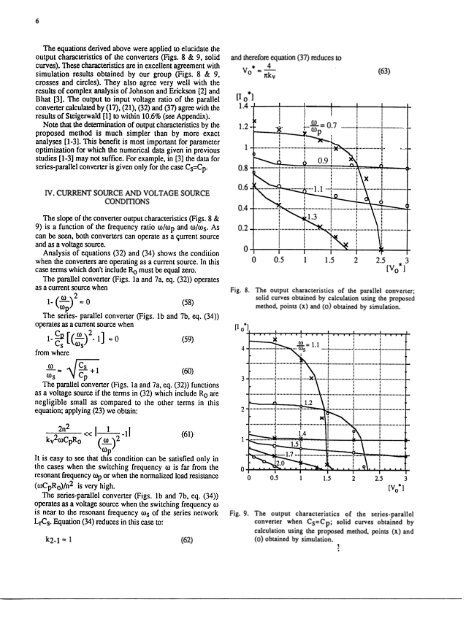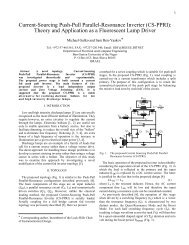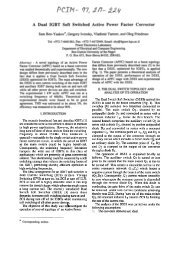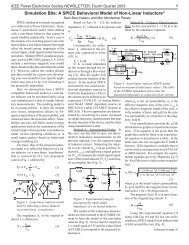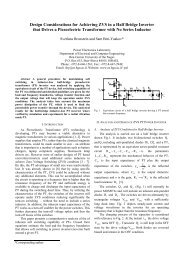A Novel RC Model of Capacitive-Loaded Parallel and Series ...
A Novel RC Model of Capacitive-Loaded Parallel and Series ...
A Novel RC Model of Capacitive-Loaded Parallel and Series ...
Create successful ePaper yourself
Turn your PDF publications into a flip-book with our unique Google optimized e-Paper software.
6<br />
The equations derived above were applied to elucidate the<br />
output characteristics <strong>of</strong> the converters (Figs. 8 & 9, solid<br />
curves). These characteristics are in excellent agreement with<br />
simulation results obtained by our group (Figs. 8 & 9,<br />
crosses <strong>and</strong> circles). They also agree very well with the<br />
results <strong>of</strong> complex analysis <strong>of</strong> Johnson <strong>and</strong> Erickson [2] <strong>and</strong><br />
Bhat [3]. The output to input voltage ratio <strong>of</strong> the parallel<br />
converter calculated by (17), (21), (32) <strong>and</strong> (37) agree with the<br />
results <strong>of</strong> Steigerwald [I] to within 10.6% (see Appendix).<br />
Note that the determination <strong>of</strong> output characteristics by the<br />
proposed method is much simpler than by more exact<br />
analyses [1-3]. This benefit is most important for parameter<br />
optimization for which the numerical data given in previous<br />
studies [1-3] may not suffice. For example, in [3] the data for<br />
series-parallel converter is given only for the case Cs=Cp.<br />
IV .CURRENT SOU<strong>RC</strong>E AND VOLTAGE SOU<strong>RC</strong>E<br />
CONDmONS<br />
The slope <strong>of</strong> the converter output characteristics (Figs. 8 &<br />
9) is a function <strong>of</strong> the frequency ratio ro/rop <strong>and</strong> ro/ros. As<br />
can be seen, both converters can operate as a


